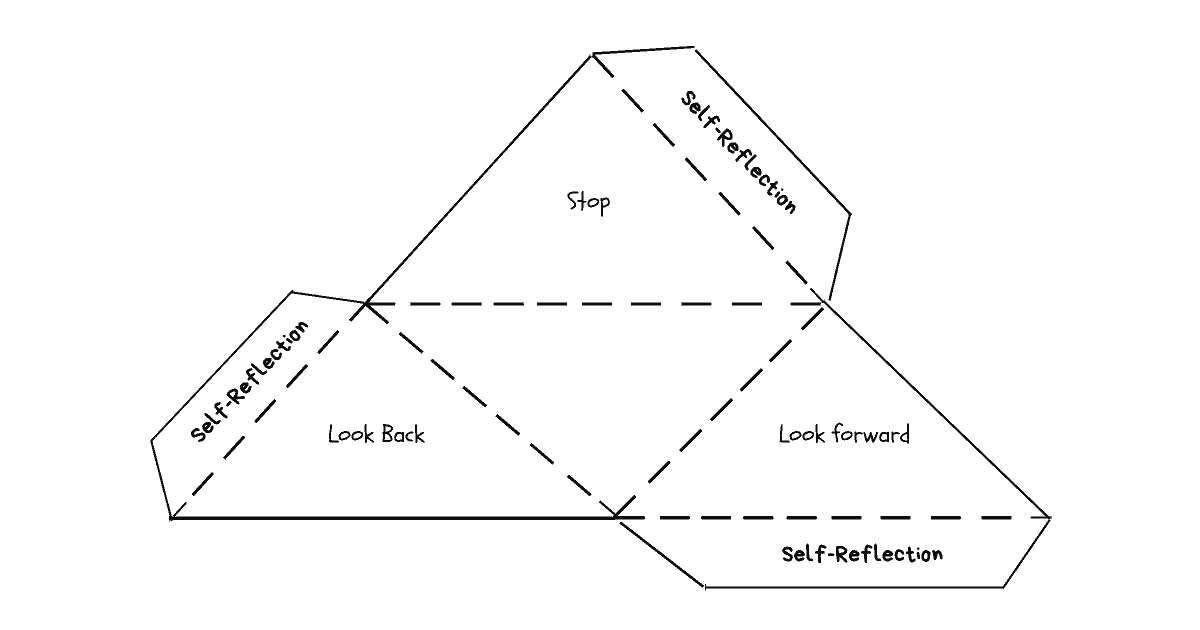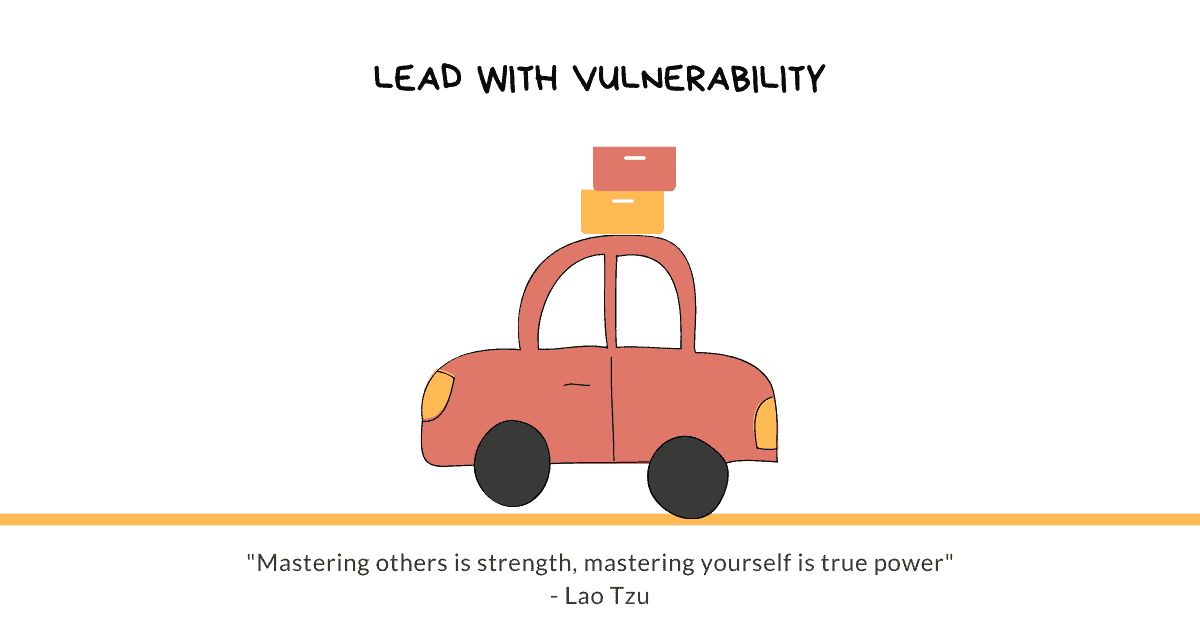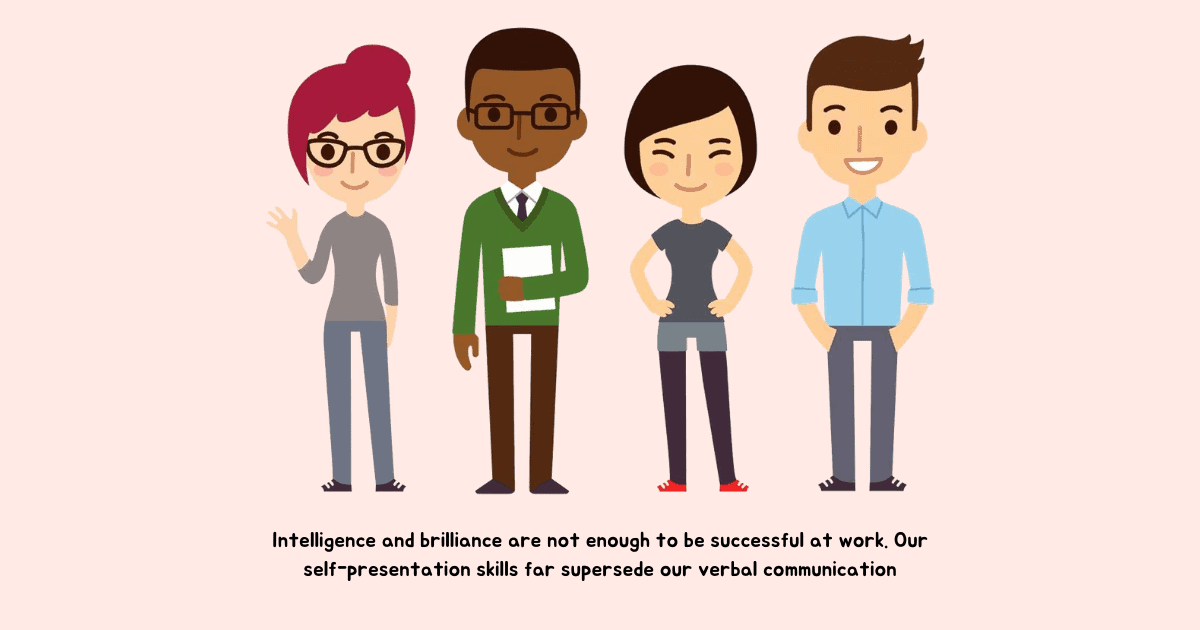How To Use Self Reflection Triangles For Personal Growth

The beginning of a new year is the time to look forward to what’s coming up next, be curious about how the year will unfold, what will it have in store for you and how you can make it better than what it is right now, but it’s also a time to reflect back on the life you are living. It’s the time to be thoughtful about how you have grown this year.
Whatever dreams you have of the future cannot be fulfilled without reflecting on the lessons from the past. Experience by itself does not lead to learning. True learning comes from reflecting on your experiences.
Iyanla Vanzant sums it up beautifully “Until you take the journey of self-reflection, it is almost impossible to grow or learn in life.”
Self-reflection without clear intent is like a maze without a map. The exercise is thrilling, but not fulfilling. Muddled up thoughts, uncertainty of the path and unknowns along the way will create confusion, add to frustration and leave you longing in search of a better path. You will either give up the exercise too soon with the belief “It’s not for me” or blame the process itself for being ineffective.
You will fail to realize that the problem is never with the maze. It’s your map that’s ineffective in helping you navigate the maze. It’s your process that needs attention.
Using a framework for self-reflection can help you find the most important questions you need to ask yourself. It can provide you a direction that’s rooted in learning, courage to confront your failures and accept the reality of your situation.
I use self reflection triangles every year around this time to look back at how I have grown and project my desires for the future I envision. It guides me to see things as they are, focus on things that matter, accept my own role in how my past turned out and the future I can shape. It helps me shift from blame to self actualisation. To realize that while there are some things that are not under my control, there’s an awful lot I can still do only if I can learn to get past my own limitations and constraints.
Just like these self reflection triangles guide me every year to create a better version of myself, I hope they will guide you too once you put them into practice.
Practice these 3 faces of the reflection triangles: Stop. Look back. Look forward.
Stop
The stop face of the reflection triangles is to pause, disconnect from the past and the future and simply feel the present.
- How do you see yourself at the moment?
- What’s truly important to this person?
- What are your principles and values?
- What part of your life matters to you the most?
Write down your thoughts. Most importantly, list your principles and values. Brian Pennie explains them in Values And Principles: A Forgotten Life Compass –
Values are beliefs, attitudes and opinions that people hold regarding specific issues. They are standards of behavior about what is important in life. Integrity, kindness, compassion and honesty are examples of commonly held values. Principles are fundamental truths that are permanent, unchanging, and universal in nature. Stephen Covey describes a principle as a “natural law like gravity. If you drop something, gravity controls. If I don’t tell you the truth, you won’t trust me; that’s a natural law.”

It’s difficult to list them down in the beginning. You probably won’t be able to put them together in a day, a week or even a year. But once you commit, you will see a list emerge over the years. It’s a transformative process that will guide you to evaluate your past and invest in creating a future that aligns with your principles and values.
It will enable you to stop wasting time in seeking who you are and spend time in creating what you want to be.
Look back
The next face is to reflect back on the year that just ended. Let me warn you: It’s not going to be easy. Reliving some of the tough moments in your life can be quite an emotional journey. As difficult as it’s going to be, don’t let any unresolved issues hide behind those uncomfortable feelings. Bring them out in the open. Prepare yourself to face them. Show the courage to embrace them.
- Did you lead a conscious life that added value or did you let life happen to you?
- What was your biggest learning this year?
- How much time did you spend doing meaningful activities and how much did you waste on inconsequential things?
- Did you invest in building trust and relationships with people around you?
- How have you improved this year?
- What did you enjoy learning this year?
- What was challenging for you this year?
- How did you act when you made a mistake and what did you learn from it?
- What are some of the things you wished you shouldn’t have said or done?
- How did people around you experience your change and growth?
While answering these questions for yourself, try to identify a pattern in how you approached your thinking, how your beliefs evolved and guided your actions and how your decisions turned out. Do you tend to push blame and responsibility onto others thereby creating negative emotions which prevents you from taking action or do you feel powerful and in control of your life thereby creating positive emotions which guides you towards constructive action?
Wheel of Life Assessment
Use this wheel of life worksheet to enhance your overall well-being by identifying and aligning different areas of your life.
Look forward
Finally, it’s time to use all your knowledge from the past to fuel your future growth. Instead of ruminating about your mistakes and worrying about the goals you did not achieve, think about what you can do to move forward.
- What are some of the things you did last year that you want to stop doing or reduce?
- What do you want to work on more?
- What systems do you plan to put in place to achieve your goals?
- What obstacles do you see and how can you get past them?
When thinking about your future, apply these 16 guiding principles to navigate uncertainty, get over difficult moments and make better decisions:
- Practice courage. Vulnerability is strength.
- Mistakes and failures don’t define you. They signal you are doing worthwhile work.
- Instead of trying to be successful, practice a growth mindset. Commit to a path of learning and growth.
- Put all your decisions through the lens of your identity. Who you wish to become matters more than who you are.
- Remind yourself that you aren’t complete, you are always work in progress.
- Embrace discomfort. The path to any meaningful contribution goes through it.
- Instead of seeking an external measure of your worth, compare yourself to your own ideal self. Identify who you wish to become, what values are important to that person and then seek internal alignment with those values.
- Step away from drama and blame and spend time building better relationships.
- Instead of letting your frustration consume you, use your dissatisfaction to invent.
- Set learning goals as opposed to performance goals.
- Do not lose your sense of self to be the person that’s liked by everyone except yourself.
- Make a plan to go after what you want, don’t wait for it to come to you.
- When in doubt, ask questions, more questions. Don’t let anything stop you from where you are going.
- Stop pleasing others and start doing things that add value to your own life and those around you.
- Channel your creative thinking. There’s always more than one answer.
- Lastly, don’t push things aside for later. Commit where, when and exactly how you are going to act on something.
Use the image in this article to create your own reflection triangles. Write down your thoughts on each of the 3 faces. After completing them, cut along the solid lines and fold along the dotted lines. Place glue on the self reflection sides and join them together. Keep them with you as a strong reminder of the tremendous power you have to learn, adapt and build the life you desire.
Leaving you with this thought from Michael Jordan “I visualize where I wanted to be, what kind of player I wanted to become. I knew exactly where I wanted to go, and I focused on getting there.” You can do it too.



























